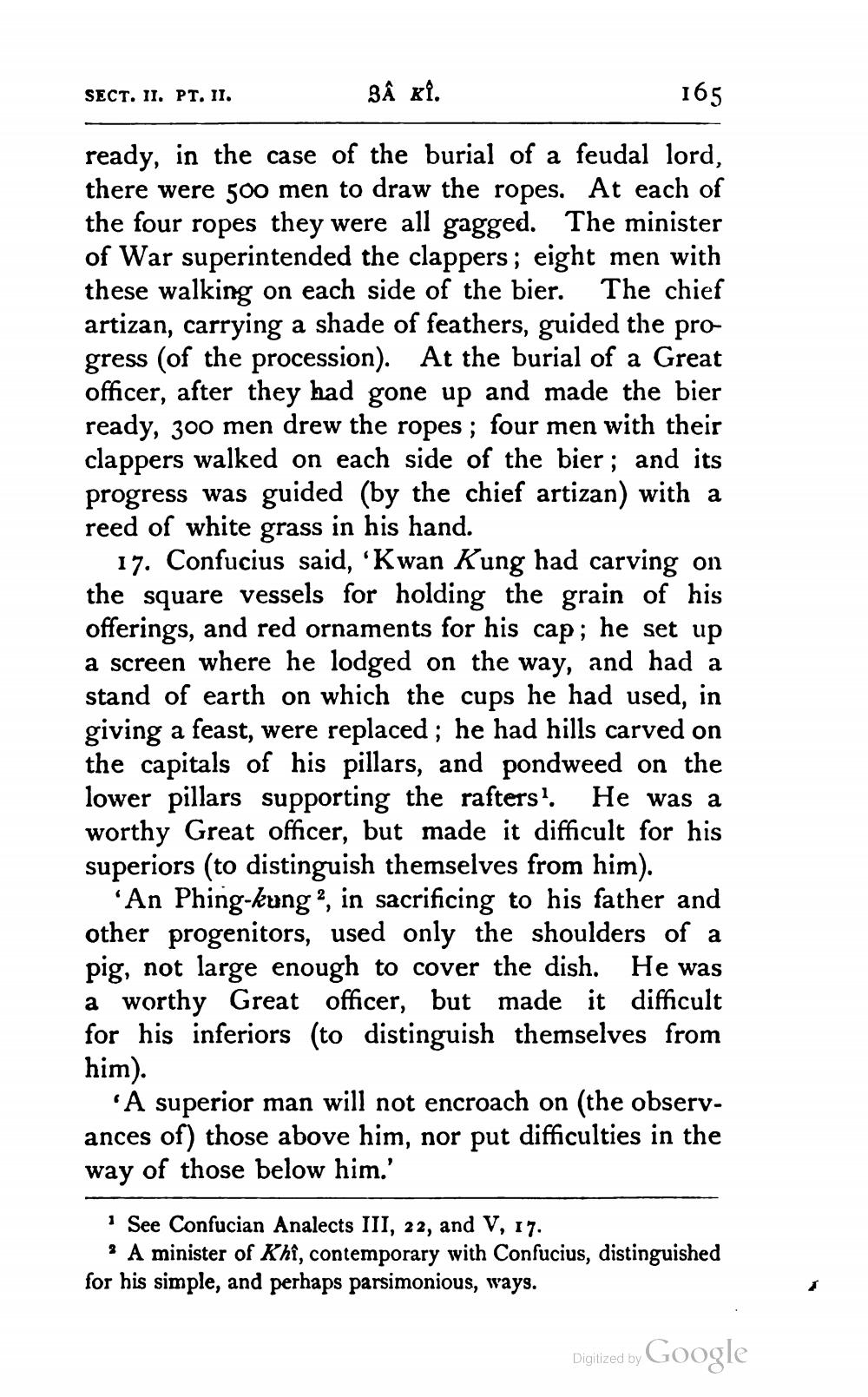________________
SECT. II. PT. 11.
BÂ xi.
165
ready, in the case of the burial of a feudal lord, there were 500 men to draw the ropes. At each of the four ropes they were all gagged. The minister of War superintended the clappers ; eight men with these walking on each side of the bier. The chief artizan, carrying a shade of feathers, guided the pro gress (of the procession). At the burial of a Great officer, after they had gone up and made the bier ready, 300 men drew the ropes; four men with their clappers walked on each side of the bier; and its progress was guided (by the chief artizan) with a reed of white grass in his hand.
17. Confucius said, 'Kwan Kung had carving on the square vessels for holding the grain of his offerings, and red ornaments for his cap; he set up a screen where he lodged on the way, and had a stand of earth on which the cups he had used, in giving a feast, were replaced; he had hills carved on the capitals of his pillars, and pondweed on the lower pillars supporting the rafters?. He was a worthy Great officer, but made it difficult for his superiors (to distinguish themselves from him).
'An Phing-kung ?, in sacrificing to his father and other progenitors, used only the shoulders of a pig, not large enough to cover the dish. He was a worthy Great officer, but made it difficult for his inferiors (to distinguish themselves from him).
"A superior man will not encroach on (the observances of) those above him, nor put difficulties in the way of those below him.'
See Confucian Analects III, 22, and V, 17. ? A minister of Khî, contemporary with Confucius, distinguished for his simple, and perhaps parsimonious, ways.
Digitized by Google




